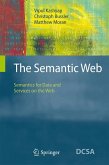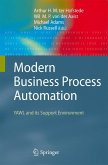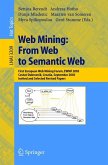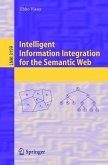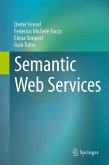The Semantic Web is a vision - the idea of having data on the Web defined and linked in such a way that it can be used by machines not just for display purposes but for automation, integration and reuse of data across various applications. However, there is a widespread misconception that the Semantic Web is a rehash of existing AI and database work. Kashyap, Bussler, and Moran dispel this notion by presenting the multi-disciplinary technological underpinnings such as machine learning, information retrieval, service-oriented architectures, and grid computing. Thus they combine the informational and computational aspects needed to realize the full potential of the Semantic Web vision.
A decade ago Tim Berners-Lee proposed an extraordinary vision: despite the p- nomenal success of the Web, it would not, and could not, reach its full potential unless it became a place where automated processes could participate as well as people. This meant the publication of documents and data to the web in such a way that they could be interpreted, integrated, aggregated and queried to reveal new connections and answer questions, rather than just browsed and searched. Many scoffed at this idea, interpreting the early emphasis on language design and reas- ing as AI in new clothes. This missed the point. The Grand Challenge of the Semantic Web is one that needs not only the information structure of ontologies, metadata, and data, but also the computational infrastructure of Web Services, P2P and Grid distributed computing and workflows. Consequently, it is a truly who- system and multi-disciplinary effort. This is also an initiative that has to be put into practice. That means apragmatic approach to standards, tools, mechanisms and methodologies, and real, challenging examples. It would seem self-evident that the Semantic Web should be able to make a major contribution to clinical information discovery. Scientific commu- ties are ideal incubators: knowledge-driven, fragmented, diverse, a range of str- tured and unstructured resources with many disconnected suppliers and consumers of knowledge. Moreover, the clinicians and biosciences have embraced the notions of annotation and classification using ontologies for centuries, and have dema- ing requirements for trust, security, fidelity and expressivity.
A decade ago Tim Berners-Lee proposed an extraordinary vision: despite the p- nomenal success of the Web, it would not, and could not, reach its full potential unless it became a place where automated processes could participate as well as people. This meant the publication of documents and data to the web in such a way that they could be interpreted, integrated, aggregated and queried to reveal new connections and answer questions, rather than just browsed and searched. Many scoffed at this idea, interpreting the early emphasis on language design and reas- ing as AI in new clothes. This missed the point. The Grand Challenge of the Semantic Web is one that needs not only the information structure of ontologies, metadata, and data, but also the computational infrastructure of Web Services, P2P and Grid distributed computing and workflows. Consequently, it is a truly who- system and multi-disciplinary effort. This is also an initiative that has to be put into practice. That means apragmatic approach to standards, tools, mechanisms and methodologies, and real, challenging examples. It would seem self-evident that the Semantic Web should be able to make a major contribution to clinical information discovery. Scientific commu- ties are ideal incubators: knowledge-driven, fragmented, diverse, a range of str- tured and unstructured resources with many disconnected suppliers and consumers of knowledge. Moreover, the clinicians and biosciences have embraced the notions of annotation and classification using ontologies for centuries, and have dema- ing requirements for trust, security, fidelity and expressivity.


